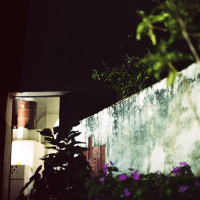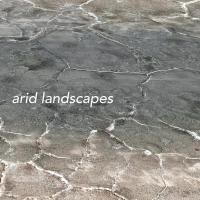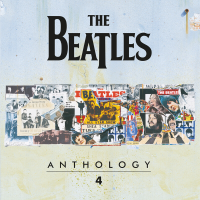Home » Jazz Articles » Album Review » Tessa Souter: Picture in Black and White
Tessa Souter: Picture in Black and White
In Picture in Black and White, Souter tells a deeply personal story. She brings together standards, originals, and traditional folk melodies to express her thoughts and feelings about a life-changing experience. Brought up as a white girl in an English household by her mother, and having learned to think of herself in that way, she discovered in adulthood that her father was black, a fact which her mother had kept secret from her, explaining her darker color as related to an imaginary Spanish flamenco dancer, partly to stop the racist bullying at school. Souter's new knowledge about her father led to a search for him, an eventual meeting, a discovery of photographs, and Souter's hitherto hidden personal and musical identity based upon her newfound roots in Africa, the Carribean, and Andalusian Spain. The family photos included in the album package are reminiscent of the Edward Steichen/Carl Sandberg collection, The Family of Man (New York: Museum of Modern Art, 1955) and the haunting portrait photography of Paul Strand. The photos and music have the same message: regardless of origins, we are all linked by our common humanity. And all our lives are a profound mix of joy and sorrow, victory and defeat. In the recording, Souter conveys such themes and her emerging sense of multi-ethnic selfhood through song.
The album begins with a traditional African song, "Kothbiro Ayub Ogada." "Oh mother, if you can hear me / The rain is coming / Bring the cattle home." A background of Adam Platt's piano, Keita Ogawa's percussion, and Yasushi Nakamura's arco bass conveys a sense of the wide plain. It is a sweet ballad, but the sense of loss that pervades all the songs on the album is expressed by Souter's voice. Despite the daughter pleading for her mother to come home, she may be gone forever.
The overall theme of the album may be experienced as archetypal: the ancestors living through us. Such a theme is expressed in McCoy Tyner's composition, "Contemplation (Ancestors)" with lyrics by vocalist Vicki Burns. "Listen: the ancestors call, voices that whisper and sigh in the wind." The intense, sustained rhythm of drums and piano mirrors Tyner with Elvin Jones in the John Coltrane Quartet. The long notes of the melody allow for full vocal expression by Souter, covering the dynamic range from pianissimo to forte.
"A Taste of Honey" is the familiar pop song from the Broadway show by the same name; it has also over time become part of the jazz repertoire. Again, the theme of loss is present, the lyrics relating to the promise of a lover returning, but the taste of his absence is "bitter." Within a well-crafted duet between Dana Leong's cello and Souter's voice, the cello proves a honeyed instrument for a beautiful interlude.
Two songs, "Dancing Girl" and "Where the Streets Have No Name," the former composed by guitarist/singer/songwriter Terry Callier and the latter from the group U2, form a two-part medley that moves from the freedom of the dance to the fear of the dark city streets. "The dancing girl" referenced in one lyric is the embodiment of the free spirit seeking her lover in the wide expanses of time and space. In the other, following a repetitive piano single-note backing, the full ensemble comes in to emphasize the "streets that have no name." These are the streets of the sometimes terrifying fears we all have about life. Billy Drummond escalates the tension with his pulsating use of the drum set, providing the dramatic ending of lovers encountering life's enduring difficulties.
"Ana Maria's Song" first appeared in Wayne Shorter's album, Native Dancer (Columbia, 1974). Souter added her own beautiful lyrics comparing the loved one to light and shadow, stars at night, and then "the new day dawning" in the world of nature. The reverent mood of Souter's singing is highlighted by a lovely guitar solo by Yotam Silberstein, comped by piano, bass and drums.
A Brazilian flavor is added to the mix with Jon Lucien's, "Child of Love." Souter sings about a love child, perhaps herself, welcomed and adored by her father. Silberstein provides a wonderful solo that reflects the bossa nova movement.
"Picture in Black and White," a Souter original, is the title tune that captures the broad theme of the album: regret at not having known her father earlier in life. He is now just an old photograph. She regrets all she missed because he wasn't there for her. Her absent, abandoning father could have been her hero. "A sad and lonely melody of all you were / And never were to me," vaguely but appropriately reminiscent of the song "Both Sides Now:" "It's love's illusion I recall/ I really don't know love at all."
Another Souter original, "You Don't Have to Believe," bears an ironic relationship to Michel Legrand's "You Must Believe in Spring" (even though someone you love doesn't come through for you). Despite such disappointment, hope is in nature and springtime. "But above the clouds of gray and the dark, the sky is always blue / That doesn't depend on you." The search for roots takes this song to Spain with a feeling of a flamenco dance. The rhythmic pulse is sustained with outstanding percussion and Spanish guitar work.
"Reynardine" is a traditional old English ballad. It's a song of a woman's abduction by a mythical creature, animal or human, depending on the particular version. In Souter's lyrics, it's about a benign old man of the mountain seeking a lover. It is done as a folk ballad with guitar and oud accompaniment.
The focus then shifts to the maternal, feminine archetype. A tango-like dance rhythm calls forth Vicki Burns' "Siren Song" of a daughter hearing the voice of her "queen" (mother) on the beach at the ocean. "Because the tide is strong and may pull me into your embrace / I hear your siren song echo across the water."
"Lonely Woman" is Ornette Coleman's melancholy lament. The bass playing echoes that of Charlie Haden on the original Coleman recording. There are fine soft exchanges between bass, drums and percussion. Souter's rendition measures up to the best interpretations of this standard by female vocalists.
The album concludes with Brazilian singer Milton Nascimento's "Nothing Will Be As It Was." It is about being on the road, an experience that changes everything. This is the transformation that Souter's search for her father has led to. The sense of irony and sadness summarizes the pervasive emotionality of loss that can be heard throughout Souter's remarkable journey to the interior of the human heart.
Track Listing
Kothbiro; Ayub Ogada; Contemplation (Ancestors); A Taste of Honey; Dancing Girl/Where the Streets Have No Name; Ana Maria’s Song; Child of Love; Picture in Black and White; You Don’t Have to Believe; Reynardine; Siren Song; Lonely Woman; Nothing Will Be As It Was.
Personnel
Tessa Souter
vocalsAdam Platt
pianoYotam Silberstein
guitarDana Leong
celloYasushi Nakamura
bassBilly Drummond
drumsKeita Ogawa
percussionAlbum information
Title: Picture in Black and White | Year Released: 2018 | Record Label: Noa Records
Tags
PREVIOUS / NEXT
Support All About Jazz
 All About Jazz has been a pillar of jazz since 1995, championing it as an art form and, more importantly, supporting the musicians who make it. Our enduring commitment has made "AAJ" one of the most culturally important websites of its kind, read by hundreds of thousands of fans, musicians and industry figures every month.
All About Jazz has been a pillar of jazz since 1995, championing it as an art form and, more importantly, supporting the musicians who make it. Our enduring commitment has made "AAJ" one of the most culturally important websites of its kind, read by hundreds of thousands of fans, musicians and industry figures every month.


































